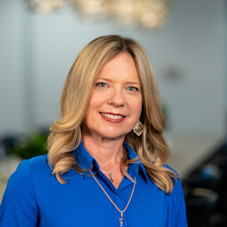Skis, crates, ropes, a sleigh, and barrels that looked more at home in the early – 1900s than the 2020s – decorated the podium causing speculation and gossip to spread among the guests before the event began.
“Are we on our way somewhere?”
“Is this a clue for the day’s itinerary?”
“What do they have to do with high-end grinding machines?”
This was Feb. 10, 2023, in the small, Swiss town of Steffisburg, in the same building that Fritz Studer launched his namesake business, Fritz Studer AG, in 1912. Nearly 100 journalists, product distributors, and United Grinding employees from five continents gathered to attend Studer’s “Motion Meeting Expedition 2023” annual press conference. The event was adeptly named, as it would take its attendees on a 15-hour tour of not just Studer’s gleaming facilities but to a local castle for lunch and a mountaintop for Surprise Night. The itinerary featured three presentations, each one staged for an expedition transporting us to the South Pole, a South American jungle, and the planet Mars.
Innovative Spirit
At the appointed hour, Studer CEO Jens Bleher came out to the curiously decorated podium to kick off the event. He spoke of the founder’s pioneering spirit, relating it to Norwegian explorer Roald Amundsen’s victory leading the first expedition to the geographical South Pole on Dec. 14, 1911. The mysterious, creative decor adorning the podium was a nice touch, illustrating the connection between Studer’s and Amundsen’s visions of success – which included proper planning. Bleher then moved on to business news, sharing that the company experienced a significant rise in machine orders and began 2023 with a large backlog of orders.
Next to speak was Sando Bottazzo, managing director – chief security officer, who highlighted that 2022 was the third-best year in Studer’s history. He spoke about preparation being crucial to the Amundsen expedition’s success and linked the same characteristic to the company’s business strategy.
Stephan Stoll, chief operating officer, concluded the executive speeches by emphasizing Studer’s commitment to the future. He explained their plans to expand their spindle shaft production and modernize their warehouse and logistics infrastructure. They will continue to invest in a robust apprenticeship program featuring modern workstations and top-level vocational training. Stoll was extremely proud to share that a Studer apprentice, Gil Beutler, won a gold medal at the SwissSkills, a silver medal at the EuroSkills, and a bronze medal at the WorldSkills 2022 competitions for industrial mechanics.
As an advocate for expanding technical education in the United States, I inquired about the Swiss apprentice program and discovered that a number of the Studer and United Grinding executives, managers, and distributors had begun as apprentices.
Precision Is Caring
Accepting that several of their executives had begun their careers as apprentices was not particularly difficult. The Swiss are, if anything, thorough. This generous and delightful event emphasized that fact, as manufacturing journalists from India, Brazil, Mexico, Egypt, Spain, Poland, and even Ukraine came to Fritz Studer AG, a member company of United Grinding, for their annual press conference. Unsurprisingly, the day-long itinerary – which included lunch fit for royalty at Schadau Castle, drives through a picturesque countryside, gondola rides, and a friendly, competitive Surprise Night between attendees – materialized precisely on time, which, of course, is a hallmark of Swiss life.
In the days after, as I decompressed and reflected on the wonderful memories and connections I’d made, I felt I made a kind of discovery: Swiss precision isn’t just an elusive quality put into a watch or machine but one that reflects a way of life that shows care and consideration.
Let me explain.
Navigating dizzying mountains and tough winter weather undoubtedly requires precision, orderliness, and timeliness to carry out daily living safely and pleasantly. Whether you’re on a train climbing steep grades, in gondolas moving briskly at incredible heights, or savoring rich, velvety chocolate, precision is at the core. People familiar with the terrain designed the parts precisely for the trains and gondolas to function well – to be secure and operating. Folks acquainted with smooth, dark, liquid chocolate designed parts to expertly mix it into a silky texture. Precision, and all that goes with it (accuracy, attentiveness, exactitude, strictness), is how the Swiss show they care, and their warmth and respect. It’s so special, so refined, and pure, they’ve turned precision into an art.
Indiana Jones Uncovers the S100
In a faux rainforest with a Mayan temple-like doorway, surrounded by green, leafy plants, an Indiana Jones look-alike (classic hat included) presented the second expedition, this time on Studer’s new S100 entry-level machine. With a whip in hand, “Jones” talked about how the designing principles of technology, concentration, instinct, and courage fed into the creation of the S100 and ensured its operation and maintenance were easy to navigate. With a machine bed made of Granitan, its dampening and thermal characteristics ensure consistently precise grinding for geometrically defined forms and contours, which can be generated with interpolating axes.
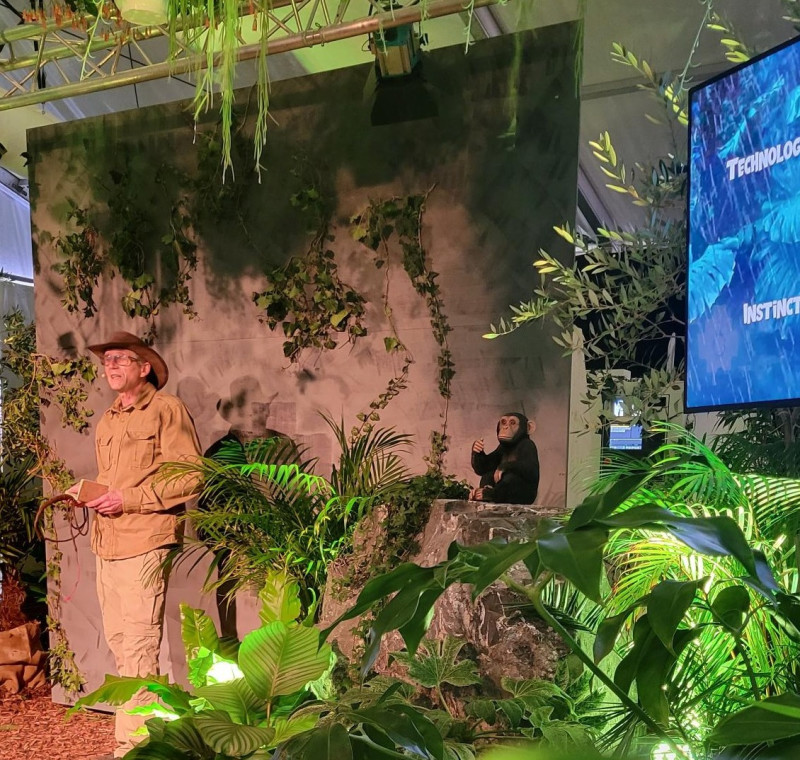
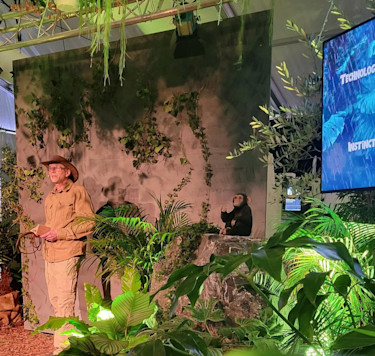
The S100 features flexible equipment. It can be equipped with up to two internal grinding spindles or one internal and one external spindle. In addition to a fixed wheelhead, it can be equipped with a manual with a 2.5-degree Hirth and, in its optimum configuration, with an automatic wheelhead with one-degree Hirth. A synchronous motor drives the grease-lubricated internal and external belt spindles. The machine is operated by the Fanuc 0i-TF PLUS controller, together with the proven Studer operating system. The S100 has an automation option. It can be equipped with a loading interface and an automatic sliding door, enabling automatic operation and the production of large series. Typical workpieces for production on the S100 include collets for toolmaking, bearing rings, ball bearings, and cylinders, as well as hydraulic control valves in small series. External and internal machining of flange parts or grinding of threads or non-circular forms is also possible. “Jones” wrapped up his presentation stating more than 200 specialists worldwide in Studer Customer Care are available to provide technical support to ensure that the machine operates reliably and efficiently.
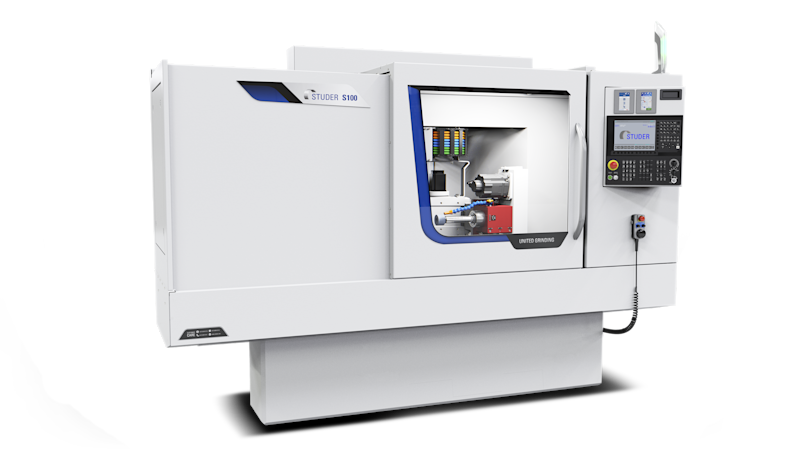
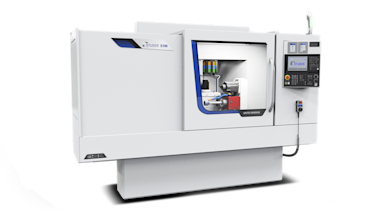
On Mars, Automation Takes Over
For the third and final expedition, we were guided to a large room immersed in red light with flickering white lights and dramatic music. I had visions of bellbottoms and John Travolta dancing – until my colleague whispered, “Welcome to Mars.” A presenter introduced several automated loading equipment options with minimal to no programming.
“Automation should enable the human operators to do their work more easily, efficiently, and safely," says Daniel Schafroth, systems division manager. “Automation only makes sense where the operator doesn't have to have a decisive influence on the process.” They included:
easyLoad – For external and universal cylindrical grinding machines (S31, S33, S22, and S41) – integrates within the machine control and is suitable for use as a gantry loading system for shaft parts with a workpiece length of up to 300 mm (11.8 inches), a diameter of up to 30 mm (1.18 inches), and interfering contour diameters of max. 50 mm (1.97 inches). The adjustable synchronized conveyor allows autonomous processing for a maximum of 50 workpieces. This machine can run autonomously for half an hour or longer with ease.
ecoLoad – For larger-volume series production for the Studer S22 production platform – is an automatic loading system for series production using high-speed grinding, production-oriented cylindrical grinding, as well as form and thread grinding. EcoLoad can load workpieces with a diameter of up to 50 mm (1.97 inches) and a length of 250 mm (9.85 inches). This is either done using a carousel magazine or an insertion prism, which can also be used as the interface for standalone tool magazines. The programming is already integrated into the grinding machine control. This ensures short retooling times.
uniLoad – Makes it possible for operators of the Studer S31 and S33 external cylindrical grinding machines to significantly increase productivity without any loss of quality. The system docks to the machine from the left. With a prismatic conveyor and all racks at full capacity, it can perform automatic processing for around an hour. It is suitable for workpieces with a length of up to 350 mm (13.8 inches) and 100 mm (3.94 inches) diameter and thus covers a large range of the parts normally produced on these machines.
smartLoad– For the S11, a production cylindrical grinding machine for small workpieces – has a footprint of only 1.8 square meters (19.4 square feet), is compact and can feed in workpieces from outside the machine, using either a conveyor or a swivelling unit, as well as clamp them and place them back after the machining. Thanks to the wide variety of configuration options, numerous applications are possible for both small and large-volume series.
roboLoad – an external loader for the S121, S131, and S141 – is designed as a gripper arm with quick-change jaws and has a lot of space for workpieces on six trays (each 1080 x 320 mm (42.5 inches x 12.6 inches)). At 1.50 m (59 inches), the system is only half the width of the machine itself. The robot arm is mounted outside the machine, giving the system more freedom thanks to the rotation axis. The roboLoad can load and unload without having a direct path available. Until now, automation solutions for grinding were largely based on linear technology such as beams and slides. However, at the moment, the roboLoad is not primarily intended for large series production but more for automated production during night shifts or extended breaks.
Digital Automation
Another feature presented in the Red Planet room included grinding software C.O.R.E., a new cross-brand hardware and software architecture of the United Grinding Group. On the large C.O.R.E. touch display with intuitive icons, operators can quickly find what they need and important information regarding the machining process. RFID access chips can be used to let the machine display only the options and information for which the individual users are qualified. Efficient remote monitoring of the machines is possible, and in the future, machines will monitor themselves for optimal functioning and proactively provide information on required maintenance measures.
Surprise Night
Later, we were transported to our hotels and given 30 minutes to change into “winter weather” clothing and snow boots for the much-anticipated culminating event, Surprise Night. A comfortable two-story coach bus took us on a 90-minute picturesque drive through the rolling foothills of the Alps to the ski resort town Gstaad. We then boarded glass-enclosed gondolas replete with padded seats and music. As we traversed higher, we took in the views of the village below and dramatic magenta rays of the setting sun. We disembarked at the Eggli mountaintop restaurant, where we were divided into teams to compete in a series of timed challenges, ranging from a snowshoe relay race, to assembling and disassembling a tent, to starting a fire with flint, to toasting a marshmallow to near perfection. We were so bundled up, I’m not sure I would recognize everyone on my team, but I did enjoy the camaraderie. Although our team did not place, we certainly won for team spirit.
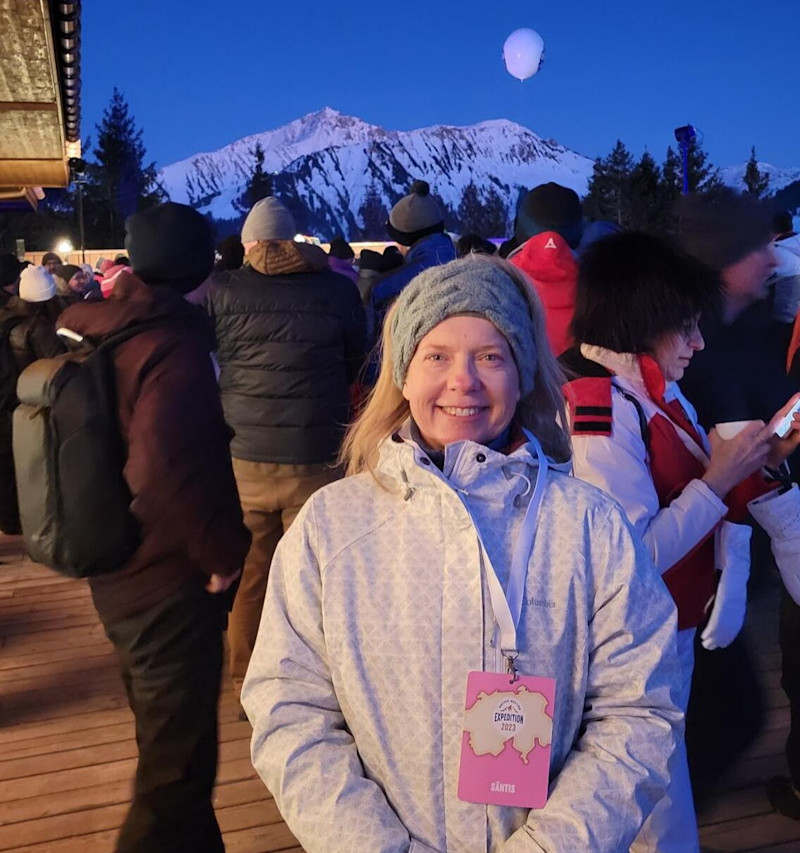
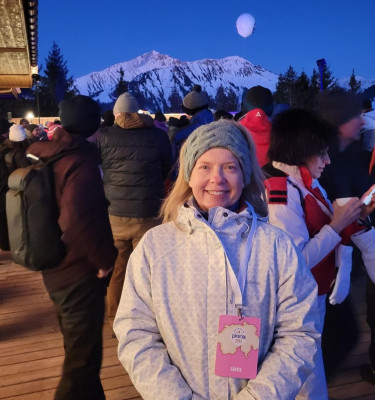
#theartofgrinding
Our expedition came to a close around midnight with some dramatic speeches and fireworks. I had been given the opportunity to try on snowshoes, drink glühwein on a mountaintop, saw cool, new, high-tech equipment, and really experience the art of Swiss hospitality.
And such art is what Studer and United Grinding infuses in all their work: the art of grinding, which is one of their most popular social media hashtags. The “art” of something means it comes from the heart, not something that can be measured exactly or objectively. When we hear “the art of medicine,” we understand the doctor not only considers the facts but listens to the patient and asks probing questions to identify the essence of the problem to plan care. It’s the give and take, ebb and flow, that allows for such solution-building, be it in health care or planning an unforgettable event. Similarly, that is how I understand Studer and United Grinding approach building and servicing their machines. They love their customers. They are very proud of their customer care team. They take pride in #theartofgrinding.
Major Takeaway
As Maya Angelou said, “I've learned that people will forget what you said, people will forget what you did, but people will never forget how you made them feel.”
The people behind Studer’s creative “Motion Meeting Expedition 2023” all-day press event gave us a deeper understanding of the company’s culture of innovation and preciseness but also attentiveness to details and imagination. If I needed a part to be extremely precise and durable, I know I’d turn to a Swiss machine. And if I wanted support for any problems down the road, I’d feel confident knowing a big care team was available for support. They put their heart into it – uniting precision and art, and that’s not something that will soon be forgotten.
More on the Swiss Expedition, Part Two
And all this was just one day of my five-day Switzerland tour, I named #SwissBoundPrecisionGround. In part two of this series, Swiss Expedition: Precision with Heart, meet five other energizing manufacturers that cemented my discovery that the Swiss precision isn’t just an elusive quality put into a watch or machine but reflects a way of life that shows care and consideration. In part two share about my visits with Swissmem, Reishauer, and Bystronic.


